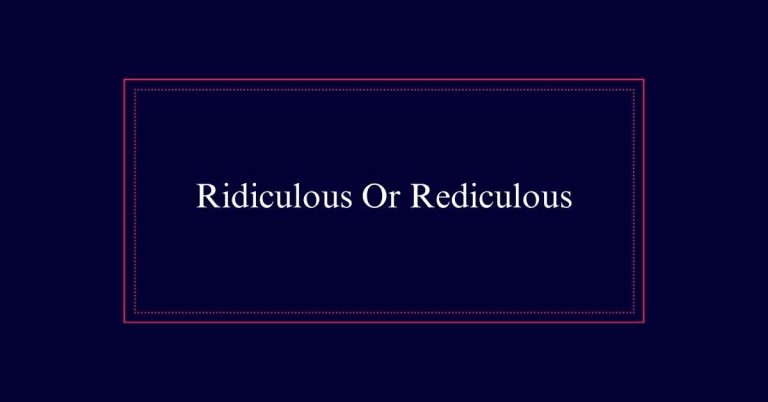What Is “Full Proof?”
‘Fullproof’ is often mistaken for the correct term ‘foolproof.’ Foolproof describes something designed to be simple and reliable, minimizing the chance of human error. This term is commonly used in engineering, software development, and everyday situations where reliability is essential. The confusion arises due to their similar pronunciation, but only ‘foolproof’ is accurate and recognized in English.
Defining Foolproof
The term ‘foolproof’ refers to something designed to be so simple and reliable that it cannot fail or be misused. It combines the words ‘fool’ and ‘proof,’ suggesting that even someone lacking good judgment (a fool) cannot cause it to fail.
This concept is essential in various fields, from engineering to software development, where reliability is critical. Foolproof designs minimize human error and enhance safety and efficiency. Examples include user-friendly software interfaces and automated safety mechanisms.
What Is Fullproof?
Despite its frequent usage, ‘fullproof’ is not a recognized term in the English language.
Many people mistakenly use it when they mean ‘foolproof’. The term ‘foolproof’ indicates something that is designed to be invulnerable to failure, even when used improperly by someone lacking good judgment.

The error arises from the similar pronunciation of ‘full’ and ‘fool’. This confusion leads to ‘fullproof’ being used in various contexts, from safety measures to reliable methods, despite it being incorrect.
It is important to note that ‘foolproof’ is the correct term to use when describing something that is reliable and failsafe.
Common Misconceptions
Many people mistakenly believe that ‘fullproof’ is a correct term. This misconception arises due to the similarity in pronunciation between ‘full’ and ‘fool’. However, ‘fullproof’ is not recognized in the dictionary, while ‘foolproof’ is the correct term, meaning something that is invulnerable or never-failing.
Some common misconceptions include:
- Spelling Variations: People often think ‘fullproof’ is an accepted alternative spelling.
- Meaning Confusion: There is a belief that ‘fullproof’ carries the same meaning as ‘foolproof’.
- Usage in Media: The incorrect term ‘fullproof’ sometimes appears in books or videos, adding to the confusion.
Examples of Fullproof
Illustrating the concept of ‘foolproof,’ certain tools and tips can serve as reliable examples. For instance, the book ‘English Bites!’ by Manish Gupta simplifies complex language rules, making it a foolproof resource for learners.
Safety measures, like installing security cameras, offer reliable protection. However, it’s essential to acknowledge that while these measures are highly effective, they may not be foolproof in every scenario.
Foolproof Vs. Fullproof
Understanding the distinction between ‘foolproof’ and ‘fullproof’ is essential for clear communication. The term ‘foolproof’ means something that is designed to be impervious to misuse or error, making it reliable and easy to use. On the other hand, ‘fullproof’ is not a recognized term in the dictionary and is often a misspelling of ‘foolproof’.
To guarantee clarity:
- Foolproof: Describes something infallible and fail-safe.
- Fullproof: Incorrect spelling often used by mistake.
- Communication: Misusing these terms can lead to misunderstanding.
Pronunciation Tips
Proper pronunciation is essential for clear communication and avoiding misunderstandings.
To differentiate between ‘foolproof’ and ‘fullproof,’ focus on the vowel sounds. ‘Fool’ has a long ‘oo’ sound as in ‘moon,’ while ‘full’ has a shorter ‘u’ sound as in ‘pull.’ Practicing these sounds can help distinguish the meanings.
Speaking slowly and emphasizing each vowel can aid in clarity. Recording yourself and listening back can also highlight areas for improvement.
Additionally, using phonetic spelling can be helpful. For example, ‘fool’ can be broken down to [fuːl] and ‘full’ to [fʊl].
Importance of Enunciation
Clear enunciation is essential for effective communication and eliminating misunderstandings. When words are spoken clearly, the listener can discern the intended meaning without confusion. This is particularly important when distinguishing words that sound similar, such as ‘foolproof’ and ‘fullproof.’
Proper enunciation contributes to:
- Avoiding Miscommunication: Clear speech prevents errors and guarantees the message is understood.
- Enhancing Professionalism: Articulate speech reflects well on the speaker and builds credibility.
- Improving Comprehension: Listeners grasp the content more easily when words are pronounced correctly.
Foolproof in Daily Life
In daily life, implementing foolproof methods can greatly enhance efficiency and reduce errors. For example, using automated reminders for important tasks guarantees nothing is forgotten.
Clear labeling of household items can prevent mix-ups and save time. Setting up direct debits for bills avoids late payments. Foolproof strategies in cooking, such as following step-by-step recipes, can lead to consistent results.
In the workplace, using checklists can help avoid missing critical steps. Foolproofing also applies to safety, such as childproofing homes to prevent accidents. Adopting these simple yet effective practices reduces the risk of mistakes and makes daily routines smoother and more reliable.






